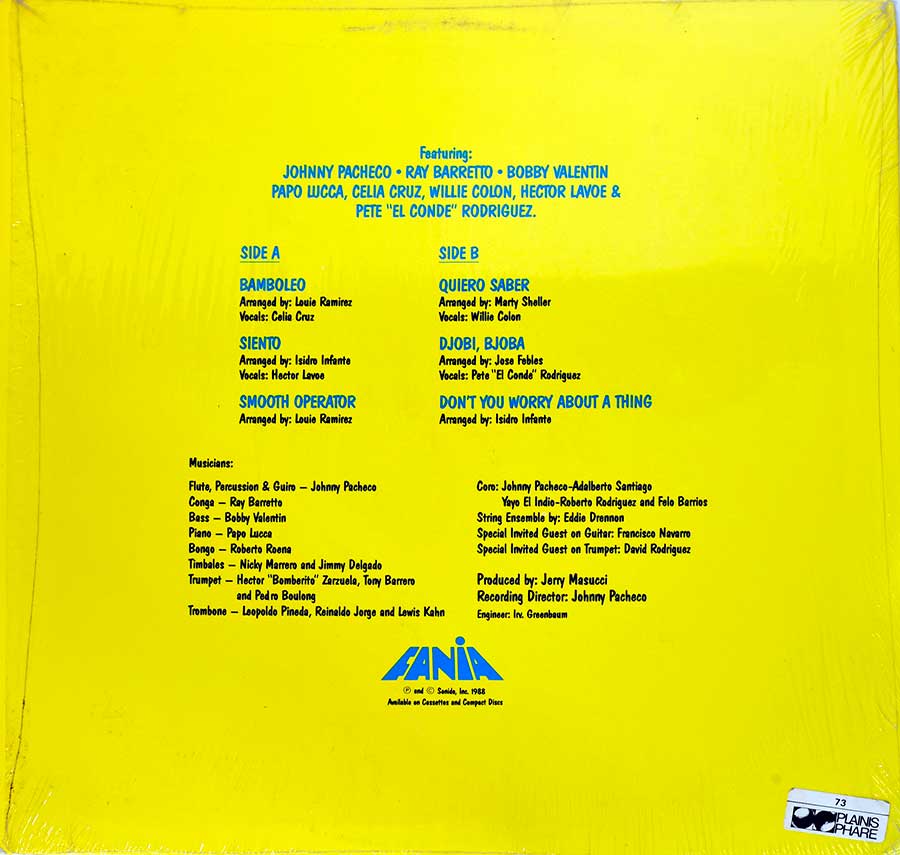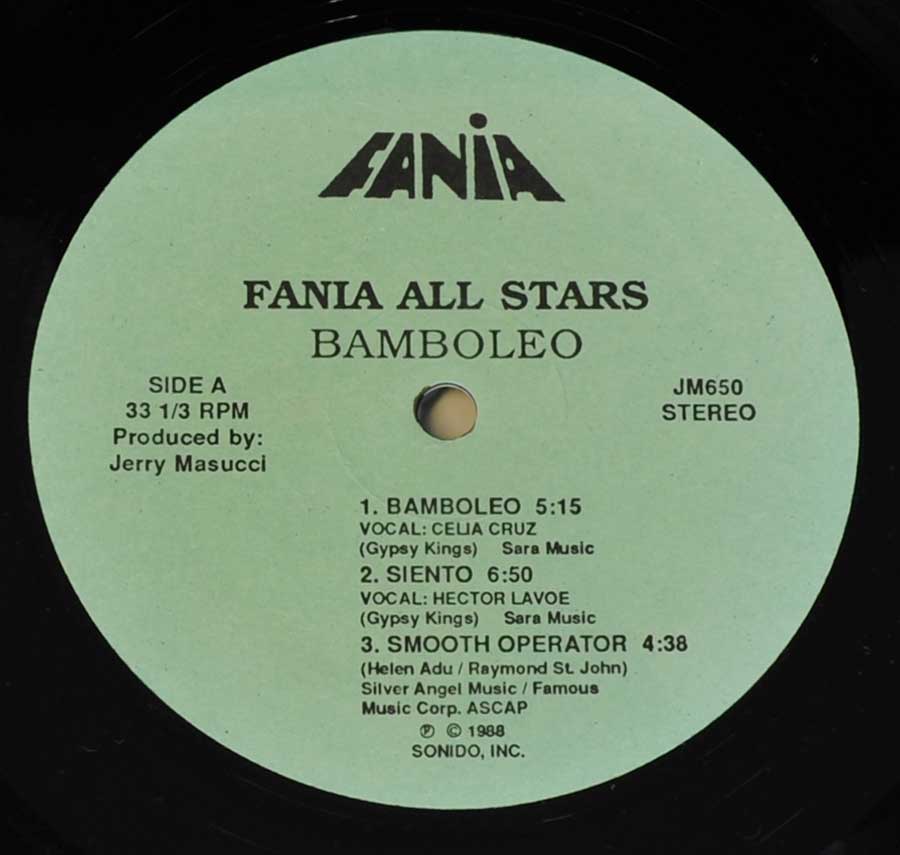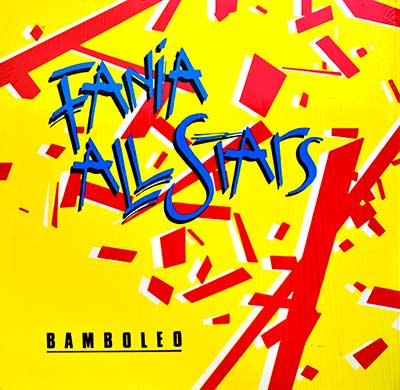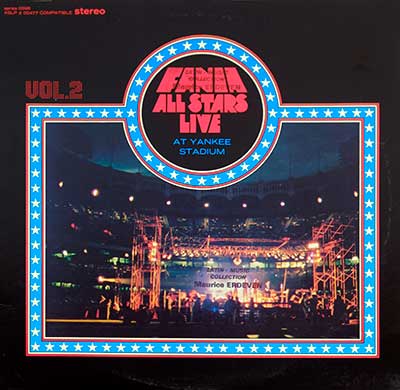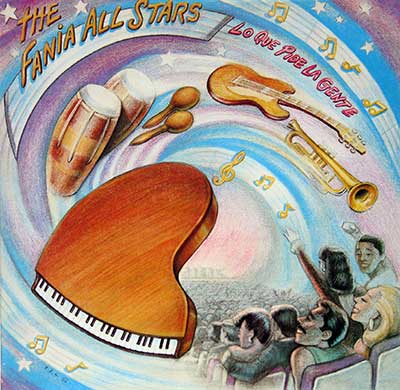FANIA ALL STARS Ñ ÒBamboleoÓ (USA, 1988) Album Description:
Late-Õ80s New York salsa was feeling the squeeze: glossy salsa er—tica dominated radio while the old guard fought for oxygen. Into that climate the Fania All Stars cut ÒBamboleo,Ó a studio set that doubles as a statement of purpose and a weather report. The backdrop is starkÑ1988 is also the year HŽctor Lavoe, spiraling through addiction and illness, attempted suicide in Puerto RicoÑyet the band answers with poise, repertoire savvy, and that blunt-force Fania rhythm section.
Concept & Repertoire
The album splits its bet. Four rumba-flamenca adaptations nod to the Gipsy Kings (ÒBamboleo,Ó ÒSiento,Ó ÒQuiero Saber,Ó ÒDjobi, DjobaÓ), while two pop crossovers refresh FaniaÕs long flirtation with Anglo repertoire: SadeÕs ÒSmooth OperatorÓ and Stevie WonderÕs ÒDonÕt You Worry About a Thing.Ó The track list pins the project squarely in 1988 and sketches its stylistic map in six cuts, lean and purposeful.
ÒSmooth Operator,Ó credited to Sade Adu and Ray St. John, is the slickest pivot point, a cool pop melody riding a clave engine; itÕs a choice thatÕs both strategic and historically on brand for the All Stars.
Band, Arrangers, Studio Braintrust
Producer Jerry Masucci and recording director Johnny Pacheco frame the set with crisp charts: Louie Ram’rez handles ÒBamboleoÓ and ÒSmooth Operator,Ó Isidro Infante steers ÒSientoÓ and ÒDonÕt You Worry About a Thing,Ó Marty Sheller charts ÒQuiero Saber,Ó and JosŽ Febles shapes ÒDjobi, Djoba.Ó That arranging bench is a history lesson by itselfÑNew York salsaÕs grammar, written in six hands.
The Engine Room & Star Turns
FaniaÕs calling card is its personnel, and ÒBamboleoÓ lines up heavy hitters: Celia Cruz (aerodynamic lead on the title cut), Willie Col—n, and HŽctor Lavoe out front; deep in the pocket are Bobby Valent’n (bass), Papo Lucca (piano), Ray Barretto (congas), Roberto Roena (bongos), and a brass corps built for lift. ItÕs the classic All Stars propositionÑvoices and virtuosos interlocked, street-tough but urbane.
Two Spotlight Moments
ÒBamboleoÓ is where the record declares itself: Celia rides the melodyÕs flamenco swing while the band folds rumba gestures into a New York tumbao; a taut guitar break punches color through the arrangement, the kind of mid-song flash that makes dancers look up. ÒSientoÓ lands differentÑleaner, shaded by HŽctor LavoeÕs weary timbre, and historically poignant as his final studio outing.
WhoÕs on Guitar in ÒSmooth OperatorÓ?
The album credits list special guest Francisco Navarro on guitar, and Discogs reflects him as ÒGuitar [Special Invited Guest],Ó the lone six-string name attached to the date. ÒSmooth OperatorÓ itself is arranged by Louie Ram’rez. The label notes arenÕt granular track-by-track, and FaniaÕs own write-up flags that some tenor-sax and electric-guitar roles arenÕt itemized per cutÑbut given NavarroÕs billing and the sessionÕs instrumentation, attributing the sleek electric filigree on ÒSmooth OperatorÓ to him is a reasonable inference. (Songwriters: Sade Adu, Ray St. John.)
How It Works Musically
The trick here is contour. The rhythm section keeps the clave unblinking while the arrangements borrow texture from rumba-flamencaÑthe hand-in-glove palmas feel in the introductions, the sudden modal turns in the hooksÑthen reasserts classic Nuyorican drive with tumbao, timbal cues, and brass stabs. On the pop material, the band trims excess, favoring dry drum timbres, precise coro lines, and comping that puts the vocal dead center. The result is dance-floor practical yet studio-slick, a snapshot of the moment when salsa pushed against radio polish without surrendering its gait.
History in the Rearview
ÒBamboleoÓ also converses with FaniaÕs own past. The All Stars had already spent the Õ70s chasing crossover via Columbia sides; here they revisit that urge more economicallyÑsix tracks, no bloatÑbefore pivoting to the next phase (ÒGuasasaÓ arrives in 1989). That arc is easy to trace across the groupÕs discography, from the Red Garter and Cheetah recordings of the late Õ60s/early Õ70s to the studio hybrids that follow.
Context & Friction
If thereÕs controversy, itÕs aesthetic. By 1988, TH-RodvenÕs assembly-line romantic salsa dominated the charts, and FaniaÕs answer is to splice flamenco-pop repertoire to New York salsa architectureÑneither pure tradition nor full capitulation to the soft-focus trend. The stakes feel real: audiences were thinning for the old school, Lavoe was in crisis, and the genreÕs center of gravity was shifting. ÒBamboleoÓ doesnÕt solve that tension; it documents it with craft and a hard stare.

